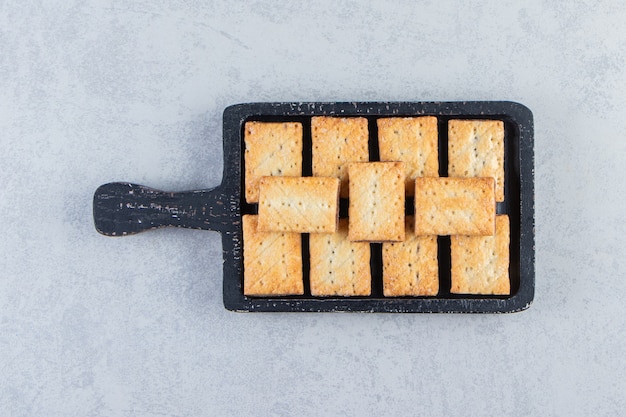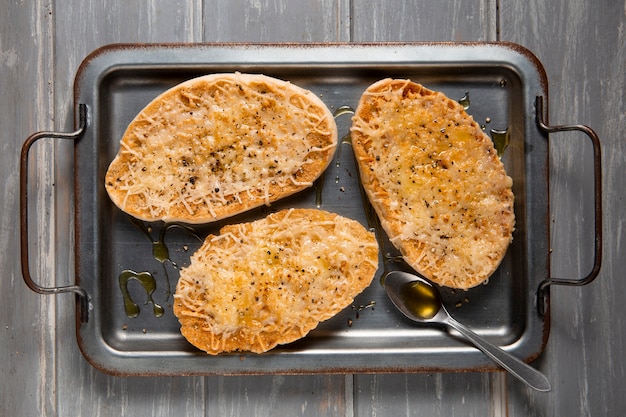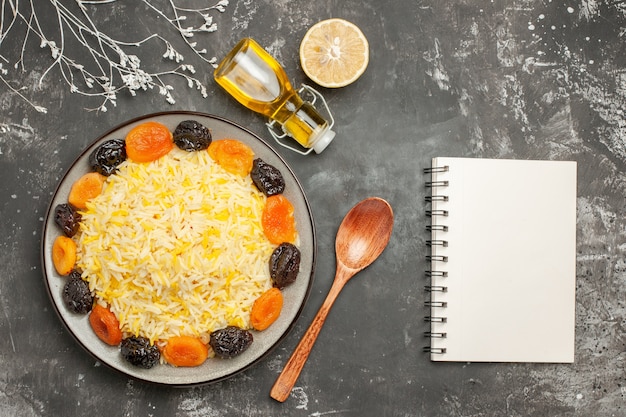(Part 1) The Ingredients

The Potato Game: Picking the Right Spud
Here's the thing about potatoes, and it's something I learned the hard way: The type you use really matters. You see, some potatoes are waxy, like the Charlotte, while others are fluffy, like the king edward. For hash browns, you want a potato that's somewhere in between. You want it to hold its shape while cooking, but also have that lovely fluffy texture inside. My go-to is the humble Maris Piper. It's a versatile potato that works well for roasting, mashing, and, of course, hash browns. It's got that lovely balance of starch and moisture that allows for a crispy exterior and a fluffy interior. Now, if you can't get your hands on Maris Pipers, don't fret! There are plenty of other good options, like the Desiree or the King Edward. Just remember, you want a potato that’s not too starchy, or your hash browns will crumble.Beyond the Potato: Adding Flavor and Depth
Okay, so potatoes are the stars of the show, but there are a few supporting actors that deserve a mention. I'm talking about those little details that take your hash browns from good to great.- Onion: A good quality white onion adds a lovely sweetness and a hint of sharpness. I like to grate it finely, but you can chop it if you prefer.
- Garlic: Just a little bit of garlic adds a depth of flavour that’s hard to resist. I use garlic powder because it’s easy and convenient, but feel free to use fresh if you prefer.
- Salt and Pepper: You can’t have hash browns without seasoning, can you? I use a generous pinch of both salt and pepper, but adjust to your taste.
- Oil: This is where things get interesting. Now, you can use whatever oil you like. Personally, I’m a fan of sunflower oil, but vegetable oil or even rapeseed oil will work just fine. Just make sure it’s a good quality oil that can handle high heat.
(Part 2) The Preparation

Peeling the Potatoes: The First Step
First things first, you need to peel those potatoes. Now, I know some people like to leave the skin on, but I find that it can get a bit tough. Plus, it doesn't quite achieve that golden-brown colour that I’m after. So, I peel them. Don’t be afraid to use your peeler, but try to keep the potatoes in a relatively uniform size. You want to aim for a chunk that’s about the size of a walnut.Shredding the Potatoes: Creating the Perfect Texture
Next, it’s time to shred those potatoes. I’m a firm believer in using a box grater for this. It gives you those lovely long, thin shreds that crisp up beautifully. If you don’t have a box grater, you can use a food processor, but be careful not to over-process. You want those shreds to be chunky, not mushy. But, if you have a mandoline, it's a great tool for creating beautifully even and thin shreds.Soaking the Potatoes: Removing Excess Starch
Here’s where the magic happens. Once your potatoes are shredded, you need to soak them in cold water. This is crucial. It helps to remove some of the starch, which can make your hash browns soggy. So, get a big bowl, fill it with cold water, and give those potatoes a good soak. Aim for about 30 minutes.Squeezing the Potatoes: Getting Rid of Excess Moisture
After soaking, it’s time to drain those potatoes. I like to use a fine-mesh sieve for this. Once they’re drained, you need to squeeze them dry. This is important, as any excess water will make your hash browns steam instead of crisp up. I like to wrap them in a clean kitchen towel and give them a good squeeze.Mixing the Ingredients: Combining Flavors
Now, it’s time to add the rest of your ingredients. Grab your grated onion and garlic powder (or fresh garlic, if that’s your jam), salt, and pepper, and add them to the shredded potatoes. Mix it all together with your hands. I like to get in there and really get my hands dirty. It’s a good way to ensure that everything is evenly distributed. Just be sure to wash your hands thoroughly afterwards.(Part 3) The Cooking

The Pan: The Right Tool for the Job
Let’s talk about the pan. Now, you can use a cast iron skillet, a non-stick pan, or even a griddle. But I find that a cast iron skillet gives you the best results. It heats up evenly and retains heat well, which is essential for achieving that crispy exterior. Just make sure your pan is well-seasoned. And if you’re using a non-stick pan, make sure it’s good quality, otherwise your hash browns might stick.The Heat: Finding the Perfect Temperature
Now, the heat is crucial. You want it to be high, but not too high. High heat will ensure that your hash browns cook quickly and evenly. If it’s too high, they will burn before they have a chance to cook through. So, I find that medium-high heat is the sweet spot.The Oil: The Right Amount for Crispness
Okay, so you’ve got your pan, your heat, and your potatoes. Now, it’s time to add the oil. I like to use about 1 tablespoon of oil for a medium-sized pan. This is enough to coat the bottom of the pan without creating a greasy mess. Just let the oil heat up for a minute or two before you add the potatoes.Adding the Hash Browns: Creating Evenly Cooked Patties
Now, it’s time to get those potatoes in the pan. I like to use a spoon or a spatula to gently scoop the potato mixture into the pan, creating patties that are about 1/2 inch thick. Don’t overcrowd the pan, as this will prevent the hash browns from cooking evenly. Give them some space to breathe.Flipping the Hash Browns: Achieving Perfect Crispness
After about 5-7 minutes, you’ll start to see the edges of the hash browns turning golden brown. Now’s the time to flip them over. Now, here’s a little trick I learned from my mum - use a spatula and a metal fish slice. That way, you can flip them over without disturbing them too much. Just be careful not to break them. The bottom of the hash browns should now have a nice golden-brown colour and a slightly crispy texture.Finishing the Hash Browns: Achieving That Golden Glow
Let those hash browns cook for another 5-7 minutes, or until they’re golden brown and crispy on both sides. Now, if you’re feeling extra fancy, you can add a little bit of butter to the pan in the last minute. It will give them a lovely sheen and add a touch of richness.(Part 4) The Serve
Your hash browns are cooked. You’ve achieved that glorious golden colour and the smell fills the air. Now, it’s time to serve. The options are endless, and all of them delicious.The Classic: A Timeless Combination
For a classic approach, simply serve your hash browns with a fried egg, bacon, and a slice of toast. You can't go wrong with a classic.The Brunch: A Touch of Elegance
If you’re feeling a little fancier, add some avocado, smoked salmon, or a dollop of sour cream. A touch of fresh herbs, like chives or parsley, adds a lovely finishing touch.The Sweet: A Unexpected Delight
For those who prefer a sweeter treat, you can try topping your hash browns with maple syrup, fruit, or even a sprinkle of cinnamon sugar. It’s a surprisingly delicious twist.(Part 5) The Mistakes
We’ve all been there, haven’t we? Those moments when your hash browns just don’t turn out the way you want them to. Don’t worry, it happens to the best of us. But that’s what makes cooking so much fun, right? It’s all about learning from our mistakes and becoming better cooks. Here are a few common mistakes to avoid:The Soggy Hash Browns: A Lack of Moisture Control
The dreaded soggy hash brown. The culprit? Too much moisture. That’s why soaking and squeezing the potatoes is so important. If you skip this step, your hash browns will steam instead of crisp up. Make sure your potatoes are thoroughly dry before you cook them.The Greasy Hash Browns: Too Much Oil or Low Heat
The other side of the coin: greasy hash browns. This happens when you use too much oil or when you cook them at too low a heat. The potatoes will absorb all that oil, leaving you with a greasy mess. Use just enough oil to coat the bottom of the pan and cook them over medium-high heat.The Burnt Hash Browns: Overly High Heat or Lack of Attention
Nobody likes a burnt hash brown. This happens when the heat is too high or when you don’t flip them over in time. Keep a close eye on your hash browns and flip them over when they start to turn golden brown. Remember, a little patience goes a long way!(Part 6) The Variations
We’ve covered the basics, but the beauty of hash browns is their versatility. They can be adapted to suit any taste and any occasion. Here are a few variations to get you started:The Spicy Hash Browns: A Kick of Heat
If you like it hot, add a pinch of chili flakes or a teaspoon of cayenne pepper to your potato mixture. You can also add a splash of hot sauce to your finished hash browns.The Cheesy Hash Browns: A Creamy Addition
For a cheesy twist, add some grated cheddar or mozzarella to your potato mixture. You can also top your finished hash browns with melted cheese. And if you’re feeling adventurous, try adding a sprinkle of Parmesan.The Herb-Infused Hash Browns: Aromatic and Fresh
For a more sophisticated flavour, add some chopped herbs to your potato mixture. I like to use a mix of parsley, chives, and dill, but you can use whatever you like.(Part 7) The Storage
Have you made a batch of perfect hash browns and you want to enjoy them later? No problem. Just store them correctly.The Leftovers: Enjoying crispy hash browns Later
Let your hash browns cool completely before storing them. This will help them to maintain their crispy texture. Once they’re cool, you can store them in an airtight container in the refrigerator for up to 3 days. You can reheat them in a non-stick pan over medium heat. A little bit of oil will help them to crisp up again.The Freezing: Storing for a Longer Period
If you want to store them for longer, you can freeze them. Cool the hash browns completely, then place them in a freezer-safe bag or container. They will last in the freezer for up to 3 months. To reheat from frozen, simply place them in a non-stick pan over medium heat for about 10 minutes, or until heated through and crispy. You can also bake them in a preheated oven at 350 degrees fahrenheit for about 15 minutes, or until heated through and crispy.(Part 8) The FAQs
Let’s answer a few frequently asked questions, so you can become a hash brown pro.Q1: Can I use pre-shredded potatoes for hash browns?
A1: I wouldn't recommend it. Pre-shredded potatoes are often treated with preservatives to prevent browning. These preservatives can make your hash browns soggy and prevent them from crisping up properly. Freshly shredded potatoes are the way to go.
Q2: Can I add other vegetables to my hash browns?
A2: Absolutely! Feel free to add other vegetables to your hash brown mix. Green peppers, mushrooms, and zucchini are all great options. Just make sure to chop them finely and cook them until tender before adding them to the potatoes.
Q3: How do I prevent my hash browns from sticking to the pan?
A3: Make sure your pan is well-seasoned or non-stick. Also, use enough oil to coat the bottom of the pan. If your hash browns are still sticking, try lowering the heat a little bit.
Q4: What are the best toppings for hash browns?
A4: The best toppings are the ones you like! But here are a few suggestions:
- Fried egg
- Bacon
- Sour cream
- Avocado
- Smoked salmon
- Cheese
- Herbs
- Maple syrup
- Fruit
- Cinnamon sugar
Q5: How do I know if my hash browns are cooked through?
A5: If they’re golden brown and crispy on both sides and have a firm texture, they’re cooked through. You can also use a fork to check if they are cooked through. If the fork goes in easily, they’re done.
(Part 9) The Conclusion
There you have it, folks! My ultimate guide to crispy, golden hash browns. Now, go forth and conquer the world of hash browns. Experiment, get creative, and most importantly, have fun! And remember, the best hash browns are the ones you make yourself. So put on your apron, grab your ingredients, and let’s get cooking!(Part 10) Hash Brown Experimentation: The Ultimate Guide Table
Here's a summary table that brings together all the key factors for creating perfect hash browns:| Factor | Explanation | Tips |
|---|---|---|
| Potatoes | Choose a potato with a balance of starch and moisture for a crispy exterior and fluffy interior. | Maris Piper, Desiree, or King Edward are good choices. |
| Shredding | Shred the potatoes thinly and evenly for optimal crispness. | Use a box grater or a mandoline for consistent results. |
| Soaking | Soak shredded potatoes in cold water to remove excess starch, preventing sogginess. | Soak for about 30 minutes. |
| Squeezing | Thoroughly squeeze out excess moisture from the potatoes after soaking. | Use a kitchen towel to remove as much water as possible. |
| Pan | A cast iron skillet is ideal for even heat distribution and crispness. | Ensure your pan is well-seasoned or use a good quality non-stick pan. |
| Heat | Cook over medium-high heat for rapid and even cooking without burning. | Adjust heat as needed to prevent burning. |
| Oil | Use a high-heat oil, like sunflower or vegetable oil, to coat the pan. | Use about 1 tablespoon of oil for a medium-sized pan. |
| cooking time | Cook for 5-7 minutes per side, or until golden brown and crispy. | Flip the hash browns when the edges start to turn golden brown. |
Everyone is watching

How to Cook Frozen Lobster Tails Perfectly: A Step-by-Step Guide
RecipesLobster. Just the word conjures up images of lavish meals, special occasions, and a taste of luxury. But let's...

Pigs in a Blanket Cooking Time: How Long to Bake for Perfect Results
RecipesAh, pigs in a blanket. Just the name conjures up images of those delightful little parcels of crispy pastry en...

Pork Fillet Cooking Time: How Long to Cook It Perfectly
RecipesPork fillet, or tenderloin as it's sometimes called, is a real favourite in our house. It's so versatile, and...

The Ultimate Guide to Cooking Delicious Frankfurters
RecipesLet's face it, we all love a good frankfurter. It's a classic, simple, and always satisfying. But let's be rea...

Wolf Meat Recipes: A Guide to Cooking Wild Game
RecipesLet's be honest, you don't see wolf meat at your local butcher shop every day. It's a bit of a wild card, but ...
